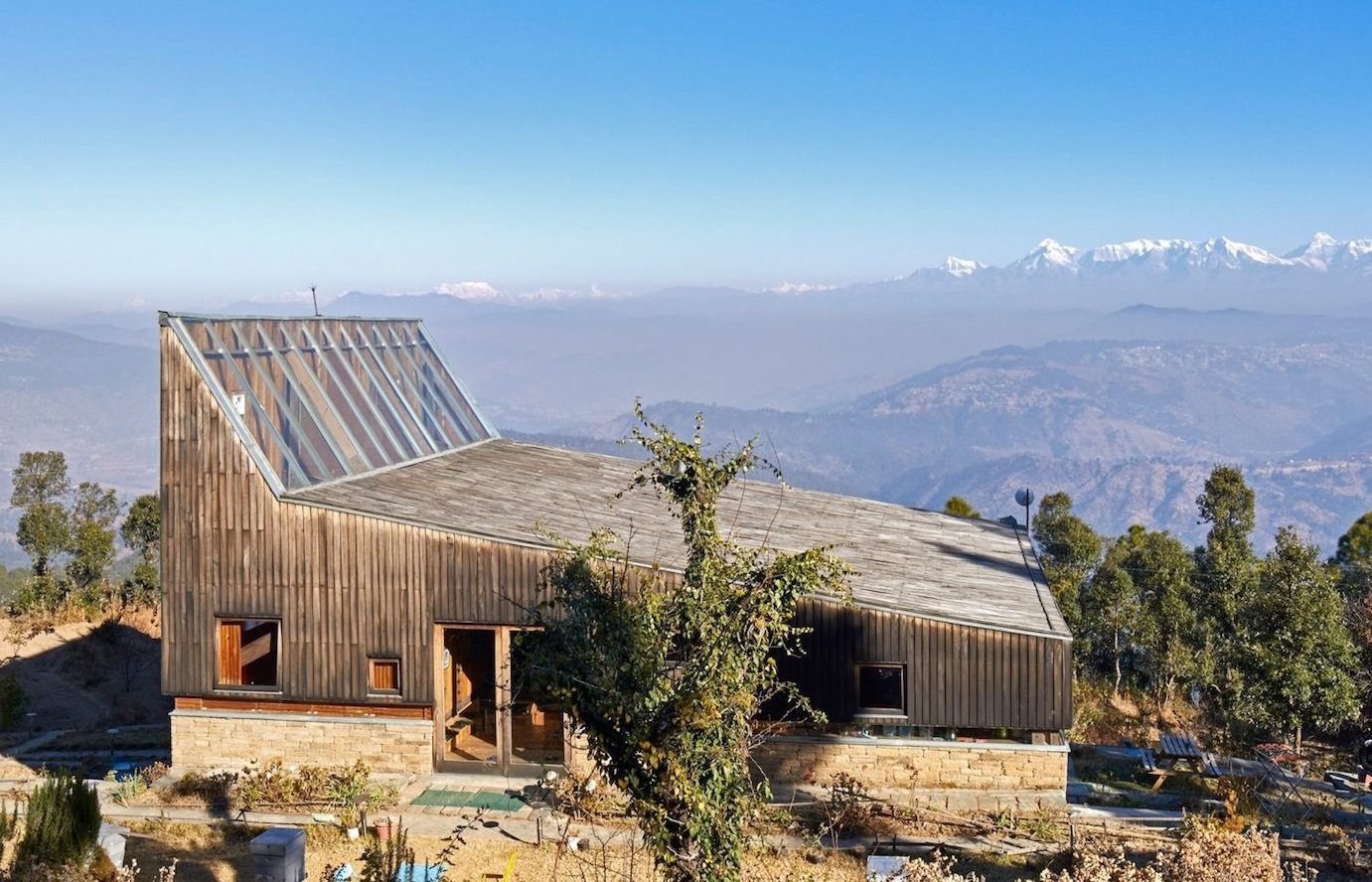#12653. Mountain Retreat: Wooden Façade with Bioclimatic Approach

Before us is an excellent example of modern mountain architecture, where functionality harmoniously blends with the natural surroundings. This house, situated on an elevation with a stunning view of a mountain range, demonstrates a minimalist yet expressive approach to design in remote locations.
The façade is constructed with vertical wooden panels creating a rhythmic visual pattern that emphasizes the building's geometry. Special attention is drawn to the asymmetrical roof form with a large glazed section, oriented likely to maximize solar gain and natural light. This glass element not only serves as a functional aspect of passive solar design but also creates a distinctive architectural accent.
The natural stone foundation provides visual grounding and contrasts with the wooden façade, creating a sensation that the building simultaneously grows from the earth and hovers above the landscape. Wooden window frames and entrance elements in a warmer tone add a subtle but significant contrast to the main façade color.
The design follows a bioclimatic approach: the placement and orientation of the house consider the local climate and topography, while the use of sustainable materials and integration with surrounding vegetation emphasize the ecological focus of the project. This example demonstrates how when designing a private home, one can use vertical wooden cladding to create contemporary aesthetics, play with roof geometry for functional and expressive purposes, and combine different natural materials to achieve visual balance and connection with the environment.